Average sizes and life expectancy for this breed:
Chartreux cats are best known for their captivating pumpkin-coloured eyes. They are attentive and calm feline companions. These amazing cats have a unique face shape that makes them appear as though they are always smiling. These astounding cats are intelligent with lightning-fast reflexes that make them particularly fun to watch.
This old cat breed has a strong, robust body and fine-boned legs, often labelled as a "potato on toothpicks". They are one of the few cat breeds to sport blue fur, and their medium-length coat has a woolly texture to it. They have a hard top-coat that is water-repellent and a fluffy, thick undercoat to keep them warm.
Their rounded head tapers towards their muzzle, creating an ever-apparent smile. Their medium-sized ears are set high on their head. But their eyes are one of the first features that you’ll notice—their large orange eyes light up their whole face.
The Chartreux is the natural, historic cat breed of France. They have been around for many centuries and are known for their blue colour and unique coat texture. Citations about France's blue cats appear in literature as far back as the 16th century.
Like most cat breeds, the Chartreux loves to climb, and they have been known to do acrobatic acts while they are in pursuit of a fishing pole toy. They are playful and smart. That’s why this cat breed likes to be challenged by learning new tricks and playing with interactive and puzzle toys that reward them with small treats when they figure them out.
The good-natured characteristic of the Chartreux makes them an excellent family pet. Their gentle nature makes them perfect for staying home alone. They are also great with young children, other cats, cat-friendly dogs, individuals living on their own and the elderly.
See available kittens




Regarded as excellent mouse catches, citations to the Chartreux can be found in French literature as early as the 16th century. There are two possible ideas of how the Chartreux may have received their name. One, as a feline companion to the Carthusian monks who also protected the grain stores for the monastery and possibly the ingredients for the renowned Chartreuse liqueur. Two, as a cat with a coat comparable to famous Spanish wool from the 18th century.
However, there are no records in the Carthusian monastery that cites these cats. But the term Chartreux for these cats was being used as early as the 17th century, which occurred before the Spanish wool and seemed to be more associated with the monastery.
Through the 1880s, French literature has referenced the Chartreux and it is now recognized as the national cat of France. As with many other cat breeds, the Chartreux suffered through World War II, and after the war ended, were no longer seen roaming the streets in France. To prevent extinction,other cat breeds were introduced to help preserve a solid genetic base. In the case of the Chartreux, blue British Shorthair and Persian cats were used, but cat breeders stayed focused on preserving the cat's general look.
In 1970, the first Chartreux cats were transported to North America through Helen and John Gamon's efforts. The original cats came from the French countryside, representing the most valued and respected French bloodlines available at the time. Through the years, North American cat breeders have regularly exchanged cats with European cat breeders, avoiding the lines that had been confused with the British Shorthair so that they can preserve the natural status and unique features of this cat breed.


Chartreux are sturdy, robust and sophisticated. Their broad head with its delicately contoured forehead tapers to a pointed muzzle, making them appear as though they are smiling. Their medium-sized ears are set high and erect on their head, which gives them an alert appearance. Their straight nose is medium in length.
Their expressive eyes are one of its most attractive features; open and round, with outer corners that curve a little upward. Their eye colour ranges from gold to copper, with bright orange being most favoured by cat breeders.
Chartreux are powerful cats. They have wide shoulders and a deep chest. Their full, medium-long body contrasts with moderately fine-boned legs and feet that look almost refined compared to their body mass. They are muscular, lithe and agile. They have very fast reflexes; that’s why they can quickly meet their obligation as the fine mouser mentioned in French literature.
Finally, one of their most distinct features is their blue coat, which may be any shade of blue-grey from lightest ash to deepest slate. Their medium-short coat is a little woolly in texture; when they reach full maturity, their coat “breaks” at their neck, chest, and flanks.
A thick undercoat gives them resistance to the elements and the feeling of a sheep’s wool. This double coat sheds seasonally; during these times, use a wide-spaced metal comb to help eliminate dead hair.
Chartreux cats are calm, quiet and approachable. They are also affectionate without being needy and demanding. Best known for their dog-like behaviour, many Chartreux cats enjoy fetching toys and may answer to their names. They tend to develop routines and rituals with their human companions, frequently following their human companion around their house. These calm and gentle cats thrive when treated with respect and will reward you with their loyal affection.
These gentle cats are calm, attentive, smart, non-aggressive, loving and good with children and other animals. They are also known to be playful well into adulthood. They are inclined to form a bond with one companion in their household, favouring those who are near them, but they are still warm and affectionate towards other members of the family.
Chartreux cats play in short outbursts, napping and relaxing the rest of their time. They are habitual creatures and enjoy the same games and routines day after day, constantly. They are also known for their intelligence. This has possibly allowed them to get quickly accustomed to modern indoor life and become perfect feline companions loved by everybody. Their loyal, jolly presence can be pleasing for elderly people and people living alone.
What’s wonderful about this cat breed is they are devoted but never obtrusive. They can adapt to most situations without complaint, and they do not mind being left alone for long periods of time. Moreover, these cats are good travellers.
Chartreux will be the happiest and most content if they feel like they have ownership over the entire household. You will find them following their human companion from room to room. If not, you’ll see them in high-up spaces where they can observe the area for rodents. Prepare plenty of cosy areas where they can snooze, preferably close to humans where they can get under-the-chin scratches.
It is best to provide Chartreux with plenty of opportunities to socialise. While they can tolerate being a lone cat, they will blossom in a household where they have company. This cat breed loves company, and they won’t be their usual chipper self when they are left alone for long periods of time.


The Chartreux is a very trainable feline. With their love of human interaction and their high intelligence, sceptics will be able to put an end to the myth that cats are untrainable. Some cat owners claim that their cat will only sometimes respond to their name, but with this breed, they will come whenever you call them.
Chartreux cats are giddy and will be ready whenever you want them to have a training session. Whether it is a puzzle game, obeying commands, learning new tricks, or a fun game of hunting a toy, your Chartreux will be involved and attentive. Challenge their smart minds and keep them engaged by giving them many puzzles and interactive toys. Remember tol reward them with kibbles or treats when they learn how to operate them.
This cat can learn basic commands, such as touch, sit, and lay down. Then, you can also try more intricate tricks like jumping through your hands, rolling over, sitting up like a meerkat, and more. According to experts, the key to training this cat breed is consistency. A Chartreux will look forward to their daily training sessions, and when they don’t get this kind of mental stimulation, they find ways to get your attention. While they are not destructive feline pets, it is best to consistently follow a routine to ensure that they are happy and content.
These friendly and good-natured cats are gregarious and loving and can become deeply devoted to their human companion. When this cat breed is appropriately socialised and trained at an early stage, they will blossom into a well-rounded and well-mannered feline companion.
Their short, thick coat is naturally easy to care for and maintain. Weekly combing will generally do the trick. However, these cats are known to shed more in the season of spring and will need more combing during this time to help get rid of these loose hairs. Bathing can be done occasionally, but remember that their coat is water-repellent and needs some effort to get thoroughly wet.
It is best to introduce a grooming routine at kittenhood. Use a very soft brush so it does not pull their fine kitten hair or damage their skin. Don’t forget to give your cat a small reward after every grooming session. This will encourage them to behave while you brush or comb their fur. If this does not cause any problem for you or your cat, you could move forward with a better, age-appropriate comb for your Chartreux.
To maintain good dental hygiene, aim to brush their teeth at least once a week.. This will help prevent tooth and gum diseases that may arise otherwise. Keep their nails clean by trimming twice a month or when needed. For clean and healthy eyes, regularly wipe the corners of their eyes to prevent eye infection. You can use a clean, soft, damp cloth, using a different part of it for each eye to avoid the spread of eye infection.
Check their ears for debris, dirt or wax weekly using a clean cotton ball or soft damp cloth moistened with a vet-approved ear cleanser. Regularly check to make sure that no foul odour is coming out of their ears. If there is, contact your veterinarian immediately for proper care and treatment.


The Chartreux is generally healthy. Their life expectancy is between eight to thirteen years with proper care, exercise and a high-quality and age-appropriate diet. However, the following health condition has been seen in the cat breed.
Despite their natural good health, it is best to buy from a reputable, registered and trusted breeder. Breeders who practice ethical cat breeding run DNA tests on their cats to ensure their litters will not have any genetic health problems.
Because of their calm, gentle and friendly nature, Chartreux are an excellent feline companion for families with children. They love to play and will enjoy the love and attention the children will give them.
This cat breed will likely walk away rather than scratch someone if they don’t like how they are being picked up or carried. But, like any other cat breed, always supervise younger kids to avoid accidents that can hurt the cat like pulling their fur or twisting their tail.
As they love company, whether from a two-legged or a four-legged companion, Chartreux can live in harmony with other cats and cat-friendly dogs. They will just act as the leader of the pack as they love to be the head of the household. As a caution, it is always recommended to introduce pets slowly and in controlled environments to make sure that they learn to get along well together.


We can connect you with Breeders that are specialized in this particular breed.
See available kittens
05-05-2024
Breed: Chartreux
Location: France
Breeder: Chartreux and Ragdoll #277
Gender: Female
Ready To Go Home: I'M READY TODAY!
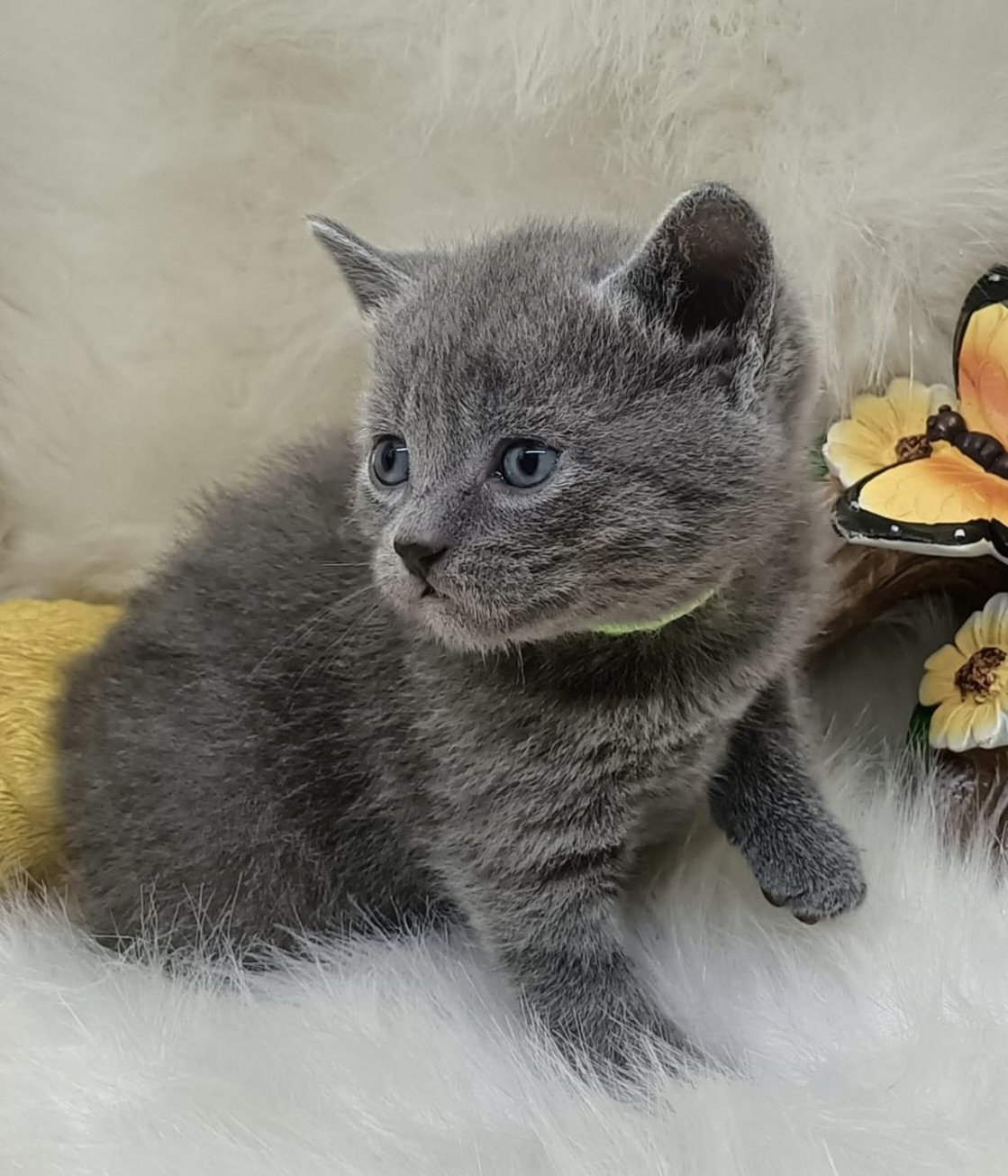
05-05-2024
Breed: Chartreux
Location: France
Breeder: Chartreux and Ragdoll #277
Gender: Male
Ready To Go Home: I'M READY TODAY!
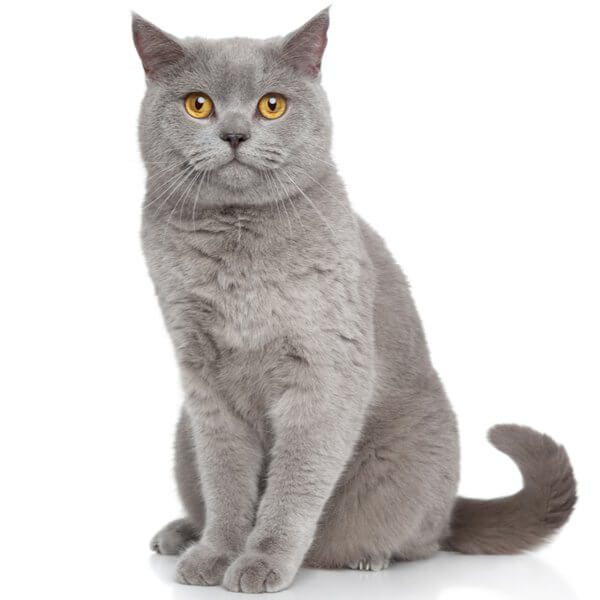
United Kingdom
Size : Medium
Coat : Short
Registration : GCCF, TICA, CFA, FIFe
Vocality : Low
Hypoallergenic : No
Grooming : Once a Week
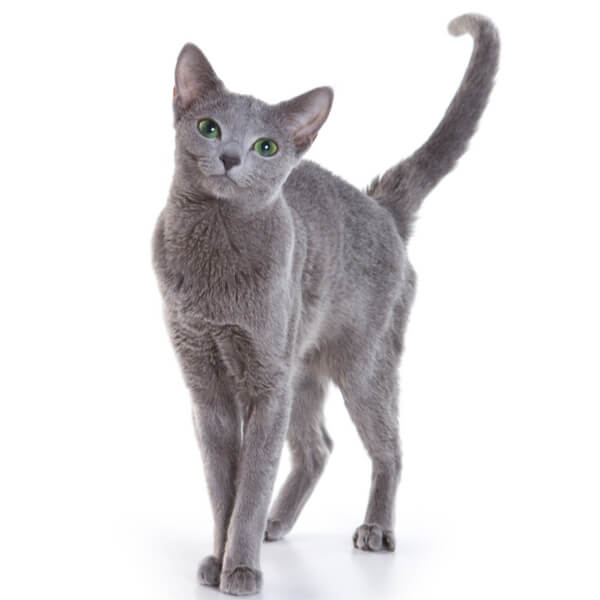
Russia
Size : Medium
Coat : Short
Registration : GCCF, TICA, CFA, FIFe
Vocality : Medium
Hypoallergenic : Yes
Grooming : Once a Week

Thailand
Size : Medium
Coat : Short
Registration : GCCF, TICA, CFA, FIFe
Vocality : Low
Hypoallergenic : No
Grooming : Once a Week

United States of America
Size : Medium
Coat : Short
Registration : TICA, CFA
Vocality : Low
Hypoallergenic : No
Grooming : Once a Week


Need some advice?
Whether you're a first time pet owner, an experienced pet owner, a new or long-time breeder, or just curious about pets, we've got you covered!
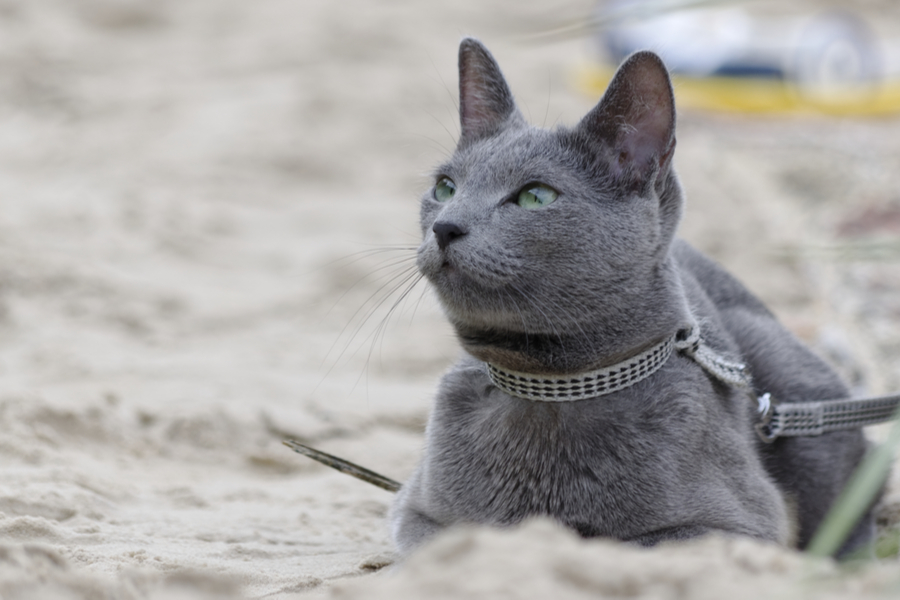
January 17, 2024
What Is The Personality Of Russian Blue Cats?
Russian Blue cats are most known for their distinctive shimmery blue-silver coat and piercing green eyes. However, this breed’s calm and gentle temperament is what makes them shine the most in the feline world.
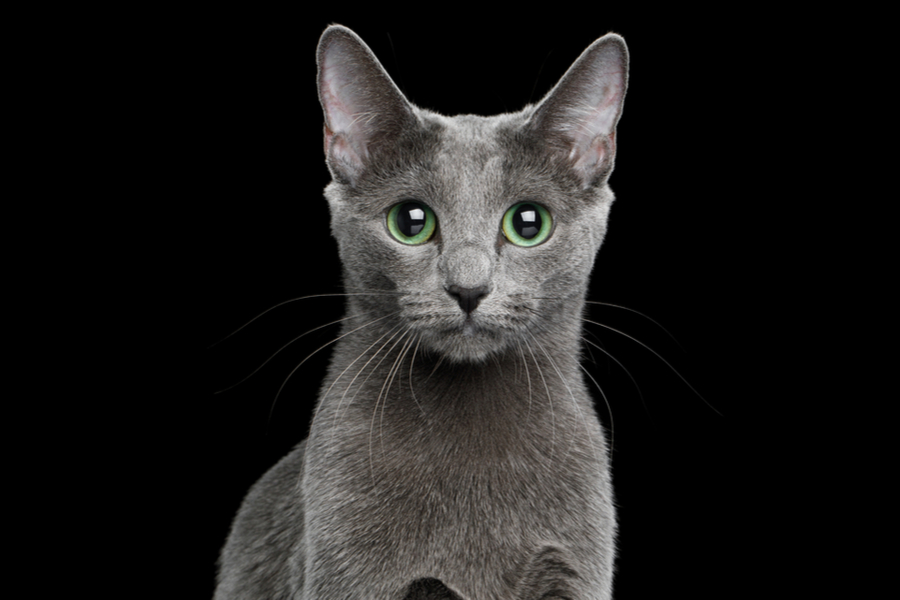
January 17, 2024
10 Facts About Russian Blue Cat Breed
Russian Blues are one of the most aesthetically stunning cat breeds, with a gorgeous plush silvery coat and vibrant green eyes. However, it’s not only their appearance that is beautiful; their nature is too.
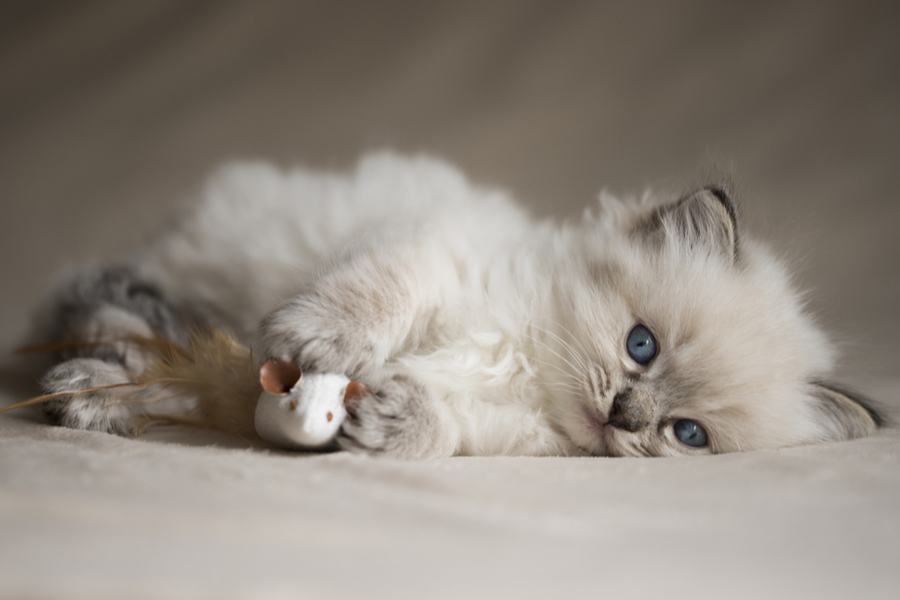
January 17, 2024
How To Choose The Right Cat Breed for You
Cats can make the most fantastic animal companions; they are adorable, friendly, and loving. However, not all felines are created equal. There are many different breeds, of which each has its unique personality traits.
Need some help?
Contact us to speak to our friendly advisor, who will gladly help you find your dream pet!



We are registered in England and Wales under registration number 12568840,
and our registered office is at 58-60 Kensington Church Street, W8 4DB London, England.
© 2023 The Pedigree Paws